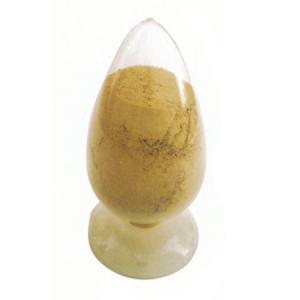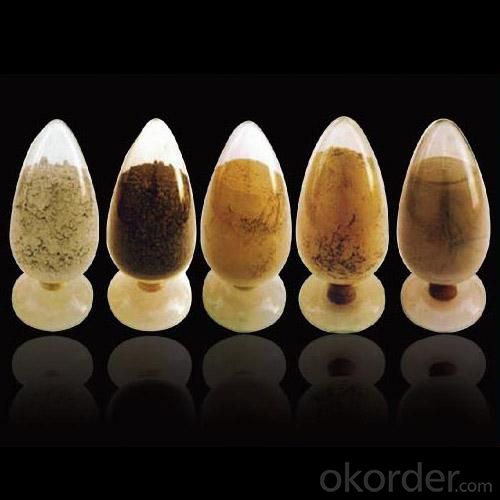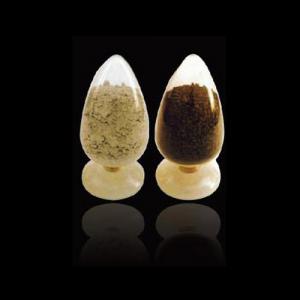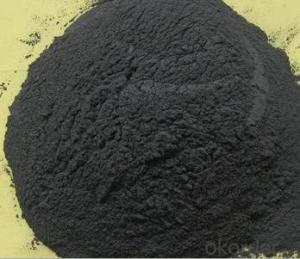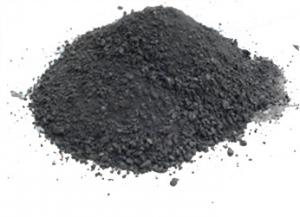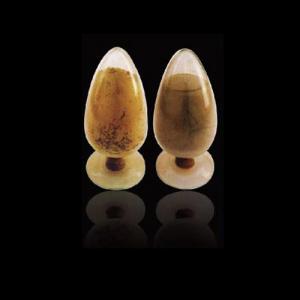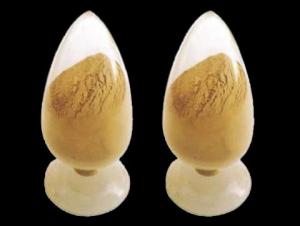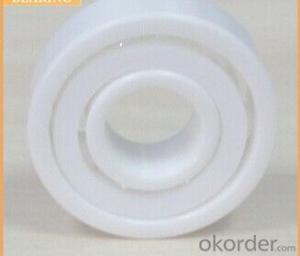Monolithic Refractories for Iron and Steel Industry - Painting Material for Tundish
- Loading Port:
- China Main Port
- Payment Terms:
- TT or L/C
- Min Order Qty:
- 2 Mt m.t.
- Supply Capability:
- 5000 Tons Per Month m.t./month
OKorder Service Pledge
OKorder Financial Service
You Might Also Like
General Information of Painting Material for Tundish
Made as per international standards, ALRE painting material for tundish is known for its excellent corrosion resistance, long operating life and high refractoriness. Further, these can be provided in different specifications as required by the clients.
Technical data of Painting Material for Tundish
Item | Painting material for tundish | ||||
Al2O3 | % | ≥ | — | ||
MgO | % | ≥ | 60-85 | ||
CaO | % | ≤ | — | ||
SiO2 | % | ≤ | — | ||
SiO2+ Fe2O3+ Al2O3 | % | ≤ | |||
Bulk density ≥ | g/cm3 | 2.0 | |||
C.C.S. (MPa) ≥ | 110℃×24hrs | 5.0 | |||
1500℃×3hrs | 8.0 | ||||
M.O.R.(MPa) ≥ | 110℃×24hrs | — | |||
1500℃×3hrs | — | ||||
Refractoriness (℃) ≥ | — | ||||
Grain size (mm) ≤ | 3 | ||||
Permanent linear change | 1500℃×2hrs | — | |||
1500℃×3hrs | -2.5~-1.0 | ||||
Life time (hr) | 10-40 | ||||
Production line and Packing of Painting Material for Tundish
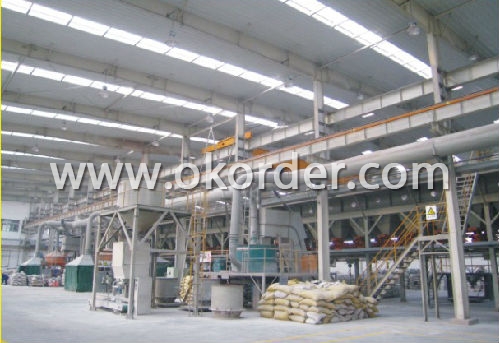

Feature of Painting Material for Tundish
Easy execution and mending
Excellent abrasive resistance performance
Excellent corrosion and scouring resistance of iron steel
Application of Painting Material for Tundish
ALRE painting material for tundish could be used widely for ladel and tundish of stell and iron industry.
- Q: How are monolithic refractories used in the repair and maintenance of ladle and tundish covers?
- Monolithic refractories are commonly used in the repair and maintenance of ladle and tundish covers due to their excellent thermal resistance and durability. Ladles and tundishes are crucial components in the steelmaking process, and their covers play a vital role in the containment of molten metal and the prevention of heat loss. When ladle and tundish covers are subjected to high temperatures and thermal cycling, they can experience wear and tear, leading to cracks, spalling, or even complete failure. This is where monolithic refractories come into play. Monolithic refractories are unshaped refractory materials that can be easily molded and applied to the damaged areas of ladle and tundish covers. They can be cast, gunned, or sprayed onto the surface, allowing for quick and efficient repairs. These refractories are typically composed of a matrix material, such as alumina, silica, or magnesia, along with various additives and bonding agents. The specific composition depends on the application requirements and the severity of the operating conditions. The repair process begins by identifying the damaged areas of the ladle or tundish cover. Any loose or damaged refractory material is removed, and the surface is prepared for the application of the monolithic refractory. This may involve cleaning, roughening, or even preheating the surface, depending on the specific requirements. The monolithic refractory is then mixed with water or a suitable binder to form a workable consistency. It is then applied to the damaged areas using the appropriate method, such as casting or spraying. After application, the refractory material is allowed to dry and cure, typically through a controlled heating process. Once cured, the monolithic refractory forms a strong and durable lining that can withstand the high temperatures, thermal cycling, and chemical reactions that occur during ladle and tundish operation. It provides excellent thermal insulation, preventing heat loss and reducing energy consumption. Furthermore, monolithic refractories offer superior resistance to slag, metal penetration, and erosion, ensuring extended service life for ladle and tundish covers. They also have good thermal shock resistance, allowing them to withstand rapid temperature changes without cracking or spalling. In summary, monolithic refractories are essential in the repair and maintenance of ladle and tundish covers due to their thermal resistance, durability, and ease of application. Their ability to withstand high temperatures, thermal cycling, and chemical reactions ensures the integrity and efficiency of ladle and tundish operations in the steelmaking industry.
- Q: How do monolithic refractories contribute to the overall safety of iron and steel operations?
- Monolithic refractories play a crucial role in ensuring the overall safety of iron and steel operations. These refractories are designed to withstand extreme temperatures, chemical reactions, and mechanical stresses, providing a protective barrier to the furnaces, ladles, and other equipment used in these operations. By maintaining the integrity of the refractory lining, monolithic refractories prevent leaks, minimize the risk of thermal shock, and reduce the chances of equipment failure or accidents. This helps to safeguard the workers, prevent damage to the infrastructure, and ensure the uninterrupted production of iron and steel, thus contributing to the overall safety of the operations.
- Q: How do monolithic refractories contribute to energy efficiency in the iron and steel industry?
- Monolithic refractories play a crucial role in enhancing energy efficiency in the iron and steel industry through various mechanisms. Firstly, these materials have excellent thermal insulation properties, which helps in minimizing heat loss from the furnaces and other high-temperature equipment. By reducing heat loss, monolithic refractories ensure that the heat generated during the iron and steel production process is efficiently utilized, leading to significant energy savings. Furthermore, monolithic refractories exhibit superior thermal shock resistance, allowing them to withstand rapid temperature changes without cracking or spalling. This property is particularly important in the iron and steel industry, where the furnaces and other equipment are subjected to extreme temperature variations. By maintaining structural integrity even under such conditions, monolithic refractories prevent heat leakage and ensure that the energy input is effectively utilized. Moreover, these refractories also contribute to energy efficiency by reducing downtime and improving operational efficiency. Monolithic refractories are known for their easy installation and repair, resulting in shorter maintenance and repair cycles. This minimizes the downtime required for furnace maintenance, allowing for continuous operation and uninterrupted energy utilization. Additionally, the high durability of monolithic refractories reduces the need for frequent replacements, further enhancing energy efficiency by reducing material and energy waste associated with regular repairs. In conclusion, monolithic refractories significantly contribute to energy efficiency in the iron and steel industry by minimizing heat loss, withstanding thermal shocks, and reducing downtime. These materials ensure that the energy input in the production process is effectively utilized, resulting in substantial energy savings and improved operational efficiency.
- Q: How do monolithic refractories contribute to the safety of iron and steel operations?
- Monolithic refractories play a crucial role in enhancing the safety of iron and steel operations. These refractories are made of a single, continuous material, which offers several benefits that contribute to the overall safety of the operations. Firstly, monolithic refractories provide excellent thermal insulation. They are designed to withstand high temperatures, preventing heat transfer to the surrounding environment. This insulation property helps in maintaining a safe working temperature for the operators, reducing the risk of burns or other heat-related injuries. Furthermore, monolithic refractories have high resistance to chemical attack. In iron and steel operations, various chemicals and molten metals are used, which can be corrosive and hazardous. The use of monolithic refractories as lining materials creates a protective barrier that resists the corrosive effects of these substances, preventing leaks and potential accidents. Another safety benefit is the ability of monolithic refractories to withstand mechanical stress. Steelmaking processes involve heavy machinery and equipment, which can exert significant pressure on the refractory linings. Monolithic refractories have excellent mechanical strength, which enables them to withstand these stresses and maintain their integrity. This prevents the risk of sudden failure or collapse, reducing the possibility of accidents and injuries due to falling debris. Additionally, monolithic refractories offer easy installation and repair. They can be applied as a castable or gunning material, allowing for quick and efficient lining of furnaces, ladles, and other equipment. This ease of installation reduces downtime during maintenance or repairs, minimizing the risk of accidents caused by delayed or prolonged shutdowns. In summary, monolithic refractories contribute to the safety of iron and steel operations through their excellent thermal insulation, resistance to chemical attack, ability to withstand mechanical stress, and ease of installation and repair. By providing a protective barrier, these refractories help in preventing injuries, maintaining a safe working environment, and minimizing the potential hazards associated with high temperatures, corrosive substances, and mechanical failures.
- Q: How do monolithic refractories resist chemical attack from molten metals and slags?
- Monolithic refractories resist chemical attack from molten metals and slags due to their chemical composition and structure. They are typically designed with high levels of resistance to corrosion and erosion, making them suitable for harsh environments. Additionally, they have low porosity, which reduces the penetration of molten metals and slags into the refractory material. The presence of certain additives and bonding agents further enhances their chemical resistance, preventing reactions between the refractory and the molten substances. Overall, monolithic refractories offer a strong barrier against chemical attack, ensuring their durability and longevity in such demanding conditions.
- Q: How do monolithic refractories perform in high-temperature environments?
- Due to their unique characteristics, monolithic refractories are highly effective in high-temperature environments. Unlike traditional refractories made of multiple bricks or tiles, these refractories are composed of a single, continuous composition. This monolithic structure offers several advantages when it comes to performance in high-temperature conditions. First and foremost, monolithic refractories exhibit excellent thermal shock resistance. They can endure rapid temperature changes without cracking or spalling. While high temperatures can impose significant stress on materials, the monolithic structure allows for better expansion and contraction, minimizing the risk of damage. Furthermore, monolithic refractories possess high resistance to chemical attack. In high-temperature environments, aggressive chemical agents are often present, which can corrode and erode traditional refractory materials. However, the monolithic composition is typically designed to be chemically inert, creating a protective barrier against these corrosive elements. Moreover, monolithic refractories offer superior strength and durability at high temperatures. Their single composition ensures a dense and compact structure, reducing the likelihood of cracking or breaking under extreme thermal conditions. This strength enables them to maintain their integrity and performance even in the most demanding environments. Additionally, monolithic refractories can be easily installed and repaired. Unlike traditional refractories that demand precise brick or tile placement, monolithic materials can be poured or sprayed into place, adapting to any shape or size. This flexibility expedites installation, making it more cost-effective and reducing downtime and maintenance costs. Overall, monolithic refractories excel in high-temperature environments due to their thermal shock resistance, chemical inertness, durability, and ease of installation. Their capacity to withstand extreme heat and harsh conditions makes them the preferred choice for industries such as steel, cement, glass, and petrochemicals, where high temperatures are prevalent.
- Q: How do monolithic refractories withstand the mechanical impacts in ladle lip applications?
- Monolithic refractories are able to withstand the mechanical impacts in ladle lip applications due to their unique properties and composition. Firstly, monolithic refractories are made from a single, homogenous material, which provides them with a high level of structural integrity. This means that they are less vulnerable to cracking or breaking when subjected to mechanical impacts. Additionally, monolithic refractories often contain additives such as fibers or aggregates, which further enhance their resistance to mechanical stresses. These additives help to distribute the forces applied to the refractory material, reducing the concentration of stress points and increasing its overall durability. Furthermore, the application process of monolithic refractories allows for a seamless and continuous lining, eliminating the presence of joints or weak points that are susceptible to mechanical damage. This ensures a more uniform distribution of the impacts and enhances the material's ability to withstand them. Moreover, monolithic refractories can be designed with specific compositions and formulations that are tailored to resist mechanical impacts. Various binders and additives can be incorporated to enhance the material's toughness, impact resistance, and overall mechanical strength. Finally, the selection of monolithic refractories for ladle lip applications also takes into consideration the operating conditions, such as temperature and chemical exposure. By choosing refractories that are suitable for these conditions, their mechanical properties can be optimized to withstand the specific challenges posed by ladle lip applications. In summary, monolithic refractories are able to withstand mechanical impacts in ladle lip applications due to their homogenous structure, the inclusion of additives, the seamless application process, and the ability to customize their composition. These factors contribute to their ability to resist cracking, breaking, and other forms of mechanical damage, ensuring their longevity and effectiveness in ladle lip applications.
- Q: What are the main factors affecting the abrasion resistance of monolithic refractories?
- There are three key aspects that categorize the main factors influencing the abrasion resistance of monolithic refractories: material composition, microstructure, and service conditions. Firstly, the abrasion resistance of monolithic refractories is significantly determined by their material composition. The selection of raw materials, such as aggregates and binders, directly impacts the overall hardness, strength, and wear resistance of the refractories. For example, high-alumina refractories, which have a high proportion of alumina as their main component, demonstrate exceptional abrasion resistance due to the hardness and toughness of alumina. Conversely, refractories with a higher percentage of softer materials like clay or magnesia may exhibit lower abrasion resistance. Secondly, the microstructure of monolithic refractories plays a crucial role in their ability to endure abrasion. The arrangement and orientation of the aggregates, as well as the bond strength between the particles and the matrix, significantly contribute to their resistance against wear. An evenly distributed and interconnected network of aggregates can strengthen the refractories and enhance their resistance to abrasion. Additionally, a compact and well-sintered matrix can prevent abrasive particles from penetrating, thereby reducing wear. Lastly, the service conditions under which monolithic refractories operate are vital factors in determining their abrasion resistance. Variables such as temperature, atmosphere, and mechanical stress can greatly impact the wear behavior of refractories. High temperatures can cause thermal expansion and contraction, resulting in cracks and spalling, which accelerate abrasion. The presence of corrosive gases or chemicals can also deteriorate the microstructure of refractories, diminishing their wear resistance. Moreover, mechanical stress from impact or friction can lead to localized wear and damage the refractories. To conclude, the abrasion resistance of monolithic refractories is influenced by material composition, microstructure, and service conditions. By carefully selecting suitable raw materials, optimizing the microstructure, and considering specific service conditions, it is possible to enhance the abrasion resistance of monolithic refractories and improve their overall performance in high-wear applications.
- Q: What are the advantages of using monolithic refractories in the iron and steel industry?
- There are several advantages of using monolithic refractories in the iron and steel industry. Firstly, monolithic refractories offer excellent thermal insulation properties. This means that they are able to withstand and retain high temperatures, which is crucial in the iron and steel manufacturing process. The ability to withstand extreme heat ensures that the refractories maintain their structural integrity, reducing the risk of failure and maintaining operational efficiency. Secondly, monolithic refractories have superior corrosion resistance. In the iron and steel industry, where materials are exposed to harsh chemicals and corrosive agents, the use of monolithic refractories helps to protect the equipment and structures from degradation. This not only extends the lifespan of the refractories but also reduces maintenance costs and downtime. Another advantage of monolithic refractories is their versatility. Unlike traditional refractory bricks, which are rigid and require skilled labor for installation, monolithic refractories can be cast or sprayed into various shapes and sizes. This flexibility allows for easier installation and customization, resulting in better lining design and improved performance. Additionally, monolithic refractories can be easily repaired or patched in case of damage, minimizing production disruptions. Furthermore, monolithic refractories have excellent mechanical strength and abrasion resistance. In the iron and steel industry, where materials are constantly being moved and processed, the refractories must be able to withstand mechanical stresses and abrasion. Monolithic refractories provide the necessary strength and resistance, ensuring that they can withstand the rigors of the industry without compromising performance. Lastly, the use of monolithic refractories in the iron and steel industry can lead to cost savings. Due to their versatility and ease of installation, monolithic refractories require less labor and time for installation, resulting in reduced installation costs. Additionally, their longer lifespan and resistance to corrosion and thermal shock minimize the need for frequent replacements, reducing maintenance and downtime costs. In conclusion, the advantages of using monolithic refractories in the iron and steel industry include excellent thermal insulation, corrosion resistance, versatility, mechanical strength, and cost savings. These benefits make monolithic refractories an ideal choice for lining furnaces, ladles, and other equipment used in the production of iron and steel.
- Q: What are the recommended storage and handling practices for monolithic refractories?
- The recommended storage and handling practices for monolithic refractories are crucial to ensure their optimal performance and longevity. Here are some key practices to follow: 1. Storage: Monolithic refractories should be stored in a clean, dry, and well-ventilated area. The storage facility should be protected from moisture, extreme temperatures, and direct exposure to sunlight. Ideally, the refractories should be stored on pallets or racks to prevent contact with the ground and minimize the risk of damage. 2. Handling: It is essential to handle monolithic refractories with care to avoid any physical damage. Refractories should be lifted and moved using appropriate lifting equipment, such as forklifts or cranes, to prevent excessive stress or strain on the material. Avoid dropping or dragging the refractories, as this can lead to cracks or fractures. 3. Packaging: If the monolithic refractories are supplied in packaging, it is important to inspect the packaging for any signs of damage or moisture before accepting the delivery. Damaged packaging can indicate potential damage to the refractory material. If any anomalies are noticed, it is advisable to inform the supplier immediately. 4. Moisture control: Monolithic refractories are susceptible to moisture absorption, which can lead to reduced performance and structural integrity. It is crucial to protect the refractories from direct contact with water or excessive humidity during storage and handling. If refractories become wet, they should be dried thoroughly before use to eliminate any absorbed moisture. 5. Stack height: When storing monolithic refractories, it is important to consider the stack height. Excessive stacking can result in pressure on the lower layers, leading to deformation or cracking. Follow the manufacturer's recommendations for maximum stack height to ensure the refractories' structural integrity. 6. Regular inspection: Regularly inspect the refractory material for any signs of damage or degradation during storage and handling. Look for cracks, spalling, or any other visible abnormalities. If any issues are identified, consult the manufacturer or a refractory expert for guidance on whether the material is still suitable for use. By following these recommended storage and handling practices, you can minimize the risk of damage to monolithic refractories and optimize their performance, ultimately extending their service life and ensuring their effectiveness in high-temperature applications.
1. Manufacturer Overview
| Location | Henan, China |
| Year Established | 2007 |
| Annual Output Value | Above US$ 200 Million |
| Main Markets | North America;Asia;Western Europe;Africa;Russia;Middle East |
| Company Certifications | ISO 9001:2008 |
2. Manufacturer Certificates
| a) Certification Name | |
| Range | |
| Reference | |
| Validity Period |
3. Manufacturer Capability
| a) Trade Capacity | |
| Nearest Port | Tianjin |
| Export Percentage | 20% - 30% |
| No.of Employees in Trade Department | 10-20 People |
| Language Spoken: | English; Chinese |
| b) Factory Information | |
| Factory Size: | Above 150,000 square meters |
| No. of Production Lines | Above 10 |
| Contract Manufacturing | Installation guide, OEM Service Offered |
| Product Price Range | High; Average |
Send your message to us
Monolithic Refractories for Iron and Steel Industry - Painting Material for Tundish
- Loading Port:
- China Main Port
- Payment Terms:
- TT or L/C
- Min Order Qty:
- 2 Mt m.t.
- Supply Capability:
- 5000 Tons Per Month m.t./month
OKorder Service Pledge
OKorder Financial Service
Similar products
Hot products
Hot Searches
Related keywords
